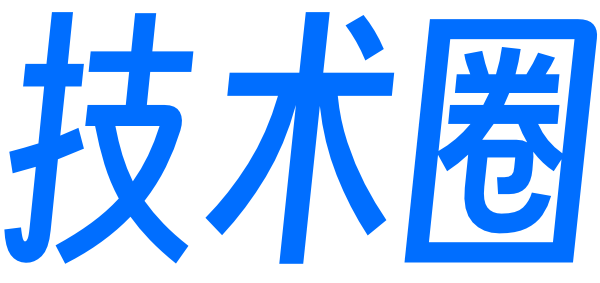java线程池趣味事:这不是线程池
要想写出高性能高并发的应用,自然有许多关键,如io,算法,异步,语言特性,操作系统特性,队列,内存,cpu,分布式,网络,数据结构,高性能组件。
胡说一通先。
回到主题,线程池。如果说多线程是提高系统并发能力利器之一,那么线程池就是让这个利器更容易控制的一种工具。如果我们自己纯粹使用多线程基础特性编写,那么,必然需要相当老道的经验,才能够驾驭复杂的环境。而线程池则不需要,你只需知道如何使用,即可轻松掌控多线程,安全地为你服务。
1:常见线程池的应用样例
线程池,不说本身很简单,但应用一定是简单的。
线程池有许多的实现,但我们只说 ThreadPoolExecutor 版本,因其应用最广泛,别无其他。当然了,还有一个定时调度线程池 ScheduledThreadPoolExecutor 另说,因其需求场景不同,无法比较。
下面,我就几个应用级别,说明下我们如何快速使用线程池。(走走过场而已,无关其他)
1.1. 初级线程池
初级版本的使用线程池,只需要借助一个工具类即可:Executors . 它提供了许多静态方法,你只需随便选一个就可以使用线程池了。比如:
// 创建固定数量的线程池Executors.newFixedThreadPool(8);// 创建无限动态创建的线程池Executors.newCachedThreadPool();// 创建定时调度线程池Executors.newScheduledThreadPool(2);// 还有个创建单线程的就不说了,都一样
使用上面这些方法创建好的线程池,直接调用其 execute() 或者 submit() 方法,就可以实现多线程编程了。没毛病!
1.2. 中级线程池
我这里所说的中级,实际就是不使用以上超级简单方式使用线程池的方式。即你已经知道了 ThreadPoolExecutor 这个东东了。这不管你的出发点是啥!
// 自定义各线程参数ThreadPoolExecutor threadPoolExecutor = new ThreadPoolExecutor(4, 20, 20, TimeUnit.MILLISECONDS, new LinkedBlockingQueue<>());
具体参数解释就不说了,咱们不扫盲。总之,使用这玩意儿,说明你已经开始有点门道了。
1.3. 高级线程池
实际上,这个版本就没法具体说如何做了。
但它可能是,你知道你的线程池应用场景的,你清楚你的硬件运行环境的,你会使用线程池命名的,你会定义你的队列大小的,你会考虑上下文切换的,你会考虑线程安全的,你会考虑锁性能的,你可能会自己造个轮子的。。。
2. 这不是线程池
我们通常理解的线程池,就是能够同时跑多个任务的地方。但有时候线程池不一像线程池,而像一个单线程。来看一个具体的简单的线程池的使用场景:
// 初始化线程池private ExecutorService executor= new ThreadPoolExecutor(Runtime.getRuntime().availableProcessors(),Runtime.getRuntime().availableProcessors(),0L, TimeUnit.SECONDS,new ArrayBlockingQueue<>(50),new NamedThreadFactory("test-pool"),new ThreadPoolExecutor.CallerRunsPolicy());// 使用线程池处理任务public Integer doTask(String updateIntervalDesc) throws Exception {long startTime = System.currentTimeMillis();List<TestDto> testList;AtomicInteger affectNum = new AtomicInteger(0);int pageSize = 1000;AtomicInteger pageNo = new AtomicInteger(1);Map<String, Object> condGroupLabel = new HashMap<>();log.info("start do sth:{}", updateIntervalDesc);List<Future<?>> futureList = new ArrayList<>();do {PageHelper.startPage(pageNo.getAndIncrement(), pageSize);List<TestDto> list= testDao.getLabelListNew(condGroupLabel);testList = list;// 循环向线程池中提交任务for (TestDto s : list) {Future<?> future = executor.submit(() -> {try {// do sth...affectNum.incrementAndGet();}catch (Throwable e) {log.error("error:{}", pageNo.get(), e);}});futureList.add(future);}} while (testList.size() >= pageSize);// 等待任务完成int i = 0;for (Future<?> future : futureList) {future.get();log.info("done:+{} ", i++);}log.info("doTask done:{}, num:{}, cost:{}ms",updateIntervalDesc, affectNum.get(), System.currentTimeMillis() - startTime);return affectNum.get();}
主要业务就是,从数据库中取出许多任务,放入线程池中运行。因为任务又涉及到db等的io操作,所以使用多线程处理,非常合理。
然而,有一种情况的出现,也许会打破这个平衡:那就是当单个任务能够快速执行完成时,而且快到刚上一任务提交完成,还没等下一次提交时,就任务就已被执行完成。这时,你就可能会看到一个神奇的现象,即一直只有一个线程在运行任务。这不是线程池该干的事,更像是单线程任务在跑。
然后,我们可能开始怀疑:某个线程被阻塞了?线程调度不公平了?队列选择不正确了?触发jdk bug了?线程池未完全利用的线程了?等等。。。
然而结果并非如此,纠其原因只是当我们向线程池提交任务时,实际上只是向线程池的队列中添加了任务。即上面显示的 ArrayBlockingQueue 添加了任务,而线程池中的各worker负责从队列中获取任务进行执行。而当任务数很少时,自然只有一部分worker会处理执行中了。至于为什么一直是同一个线程在执行,则可能是由于jvm的调度机制导致。事实上,是受制于 ArrayBlockingQueue.poll() 的公平性。而这个poll()的实现原理,则是由 wait/notify 机制的公平性决定的。
如下,是线程池的worker工作原理:
// java.util.concurrent.ThreadPoolExecutor#runWorker/*** Main worker run loop. Repeatedly gets tasks from queue and* executes them, while coping with a number of issues:** 1. We may start out with an initial task, in which case we* don't need to get the first one. Otherwise, as long as pool is* running, we get tasks from getTask. If it returns null then the* worker exits due to changed pool state or configuration* parameters. Other exits result from exception throws in* external code, in which case completedAbruptly holds, which* usually leads processWorkerExit to replace this thread.** 2. Before running any task, the lock is acquired to prevent* other pool interrupts while the task is executing, and then we* ensure that unless pool is stopping, this thread does not have* its interrupt set.** 3. Each task run is preceded by a call to beforeExecute, which* might throw an exception, in which case we cause thread to die* (breaking loop with completedAbruptly true) without processing* the task.** 4. Assuming beforeExecute completes normally, we run the task,* gathering any of its thrown exceptions to send to afterExecute.* We separately handle RuntimeException, Error (both of which the* specs guarantee that we trap) and arbitrary Throwables.* Because we cannot rethrow Throwables within Runnable.run, we* wrap them within Errors on the way out (to the thread's* UncaughtExceptionHandler). Any thrown exception also* conservatively causes thread to die.** 5. After task.run completes, we call afterExecute, which may* also throw an exception, which will also cause thread to* die. According to JLS Sec 14.20, this exception is the one that* will be in effect even if task.run throws.** The net effect of the exception mechanics is that afterExecute* and the thread's UncaughtExceptionHandler have as accurate* information as we can provide about any problems encountered by* user code.** @param w the worker*/final void runWorker(Worker w) {Thread wt = Thread.currentThread();Runnable task = w.firstTask;w.firstTask = null;w.unlock(); // allow interruptsboolean completedAbruptly = true;try {// worker 不停地向队列中获取任务,然后执行// 其中获取任务的过程,可能被中断,也可能不会,受到线程池伸缩配置的影响while (task != null || (task = getTask()) != null) {w.lock();// If pool is stopping, ensure thread is interrupted;// if not, ensure thread is not interrupted. This// requires a recheck in second case to deal with// shutdownNow race while clearing interruptif ((runStateAtLeast(ctl.get(), STOP) ||(Thread.interrupted() &&runStateAtLeast(ctl.get(), STOP))) &&!wt.isInterrupted())wt.interrupt();try {beforeExecute(wt, task);Throwable thrown = null;try {task.run();} catch (RuntimeException x) {thrown = x; throw x;} catch (Error x) {thrown = x; throw x;} catch (Throwable x) {thrown = x; throw new Error(x);} finally {afterExecute(task, thrown);}} finally {task = null;w.completedTasks++;w.unlock();}}completedAbruptly = false;} finally {processWorkerExit(w, completedAbruptly);}}/*** Performs blocking or timed wait for a task, depending on* current configuration settings, or returns null if this worker* must exit because of any of:* 1. There are more than maximumPoolSize workers (due to* a call to setMaximumPoolSize).* 2. The pool is stopped.* 3. The pool is shutdown and the queue is empty.* 4. This worker timed out waiting for a task, and timed-out* workers are subject to termination (that is,* {@code allowCoreThreadTimeOut || workerCount > corePoolSize})* both before and after the timed wait, and if the queue is* non-empty, this worker is not the last thread in the pool.** @return task, or null if the worker must exit, in which case* workerCount is decremented*/private Runnable getTask() {boolean timedOut = false; // Did the last poll() time out?for (;;) {int c = ctl.get();int rs = runStateOf(c);// Check if queue empty only if necessary.if (rs >= SHUTDOWN && (rs >= STOP || workQueue.isEmpty())) {decrementWorkerCount();return null;}int wc = workerCountOf(c);// Are workers subject to culling?boolean timed = allowCoreThreadTimeOut || wc > corePoolSize;if ((wc > maximumPoolSize || (timed && timedOut))&& (wc > 1 || workQueue.isEmpty())) {if (compareAndDecrementWorkerCount(c))return null;continue;}try {// 可能调用超时方法,也可能调用阻塞方法// 固定线程池的情况下,调用阻塞 take() 方法Runnable r = timed ?workQueue.poll(keepAliveTime, TimeUnit.NANOSECONDS) :workQueue.take();if (r != null)return r;timedOut = true;} catch (InterruptedException retry) {timedOut = false;}}}
即线程池worker持续向队列获取任务,执行即可。而队列任务的获取,则由两个读写锁决定:
// java.util.concurrent.ArrayBlockingQueue#takepublic E take() throws InterruptedException {final ReentrantLock lock = this.lock;// 此处锁,保证执行线程安全性lock.lockInterruptibly();try {while (count == 0)// 此处释放锁等待,再次唤醒时,要求必须重新持有锁notEmpty.await();return dequeue();} finally {lock.unlock();}}///*** Inserts the specified element at the tail of this queue, waiting* for space to become available if the queue is full.** @throws InterruptedException {@inheritDoc}* @throws NullPointerException {@inheritDoc}*/public void put(E e) throws InterruptedException {checkNotNull(e);final ReentrantLock lock = this.lock;lock.lockInterruptibly();try {while (count == items.length)notFull.await();enqueue(e);} finally {lock.unlock();}}/*** Inserts element at current put position, advances, and signals.* Call only when holding lock.*/private void enqueue(E x) {// assert lock.getHoldCount() == 1;// assert items[putIndex] == null;final Object[] items = this.items;items[putIndex] = x;if (++putIndex == items.length)putIndex = 0;count++;// 通知取等线程,唤醒notEmpty.signal();}
所以,具体谁取到任务,就是要看谁抢到了锁。而这,可能又涉及到jvm的高效调度策略啥的了吧。(虽然不确定,但感觉像) 至少,任务运行的表象是,所有任务被某个线程一直抢到。即jvm认为,被某线程抢到是最优策略。
3. 回归线程池
线程池的目的,在于处理一些异步的任务,或者并发的执行多个无关联的任务。在于让系统减负。而当任务的提交消耗,大于了任务的执行消耗,那就没必要使用多线程了,或者说这是错误的用法了。我们应该线程池做更重的活,而不是轻量级的。如上问题,执行性能必然很差。但我们稍做转变,也许就不一样了。
// 初始化线程池private ExecutorService executor= new ThreadPoolExecutor(Runtime.getRuntime().availableProcessors(),Runtime.getRuntime().availableProcessors(),0L, TimeUnit.SECONDS,new ArrayBlockingQueue<>(50),new NamedThreadFactory("test-pool"),new ThreadPoolExecutor.CallerRunsPolicy());// 使用线程池处理任务public Integer doTask(String updateIntervalDesc) throws Exception {long startTime = System.currentTimeMillis();List<TestDto> testList;AtomicInteger affectNum = new AtomicInteger(0);int pageSize = 1000;AtomicInteger pageNo = new AtomicInteger(1);Map<String, Object> condGroupLabel = new HashMap<>();log.info("start do sth:{}", updateIntervalDesc);List<Future<?>> futureList = new ArrayList<>();do {PageHelper.startPage(pageNo.getAndIncrement(), pageSize);List<TestDto> list= testDao.getLabelListNew(condGroupLabel);testList = list;// 一批任务只向线程池中提交任务Future<?> future = executor.submit(() -> {for (TestDto s : list) {try {// do sth...affectNum.incrementAndGet();}catch (Throwable e) {log.error("error:{}", pageNo.get(), e);}}});futureList.add(future);} while (testList.size() >= pageSize);// 等待任务完成int i = 0;for (Future<?> future : futureList) {future.get();log.info("done:+{} ", i++);}log.info("doTask done:{}, num:{}, cost:{}ms",updateIntervalDesc, affectNum.get(), System.currentTimeMillis() - startTime);return affectNum.get();}
即,让每个线程执行的任务足够重,以至于完全忽略提交的消耗。这样才能够发挥多线程的作用。

腾讯、阿里、滴滴后台面试题汇总总结 — (含答案)
面试:史上最全多线程面试题 !
最新阿里内推Java后端面试题
JVM难学?那是因为你没认真看完这篇文章

关注作者微信公众号 —《JAVA烂猪皮》
了解更多java后端架构知识以及最新面试宝典


看完本文记得给作者点赞+在看哦~~~大家的支持,是作者源源不断出文的动力
作者:等你归去来
出处:https://www.cnblogs.com/yougewe/p/14421826.html
